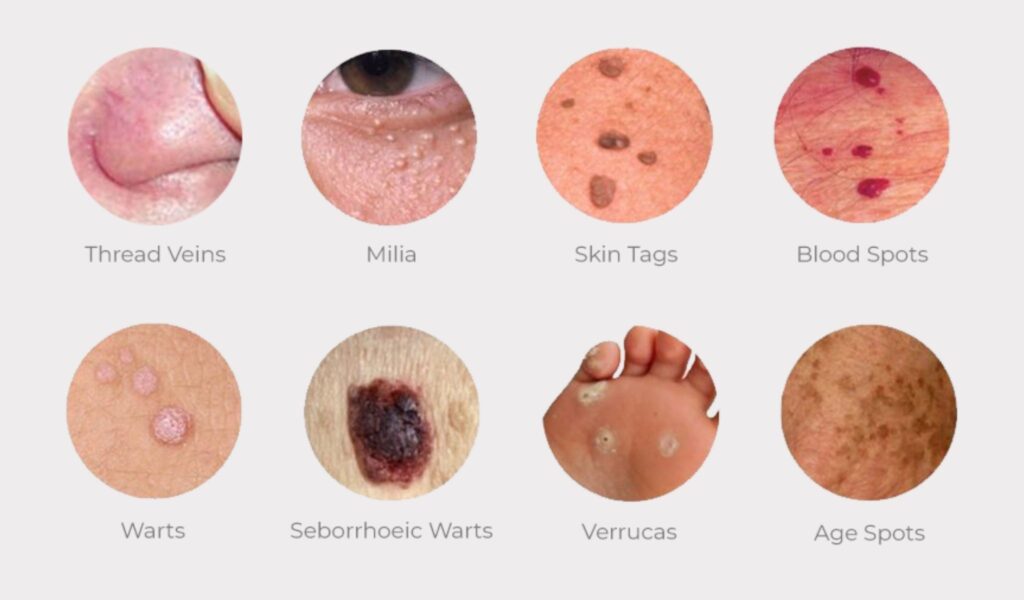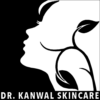SKIN TAGS & WARTS

What are Skin Tags?
Skin tags, medically known as acrochordons or fibroepithelial polyps, are small, benign (non-cancerous) growths that appear on the skin’s surface. They are typically flesh-colored or slightly darker and can vary in size from a few millimeters to a few centimeters. Skin tags often have a stalk or peduncle that attaches them to the skin.
Skin tags are generally harmless and do not require treatment. However, some people choose to have them removed for cosmetic reasons or if they become irritated. Removal methods include freezing (cryotherapy), cutting (surgical excision), or burning (electrocautery).
Skin tags are not contagious, and having one does not usually indicate a serious health issue. However, if you notice any changes in the appearance of a skin tag, such as bleeding, color changes, or rapid growth, it’s a good idea to consult a Skin Consultant, as these could be signs of a different skin condition or a more serious issue.
What are warts?
Warts are small, non-cancerous growths that appear on the skin or mucous membranes. Warts are common and can affect people of all ages, although they are more common in children and teenagers.
Types of Warts
There are several types of warts, each with distinct characteristics:
- Common Warts (Verruca vulgaris): These warts are typically found on the hands and fingers. They are small, firm, and dome-shaped, with a rough, grayish-brown surface. Common warts often have tiny black dots, which are actually small blood vessels.
- Plantar Warts: Plantar warts appear on the soles of the feet and can be painful when walking or standing due to the pressure placed on them. They have a flattened appearance with hard, thick skin and small black dots. Walking barefoot in damp environments, like public showers or swimming pools, can increase the risk of developing plantar warts.
- Flat Warts (Verruca plana): These warts are smoother and flatter than common warts. They can appear in large numbers, often on the face, neck, hands, or legs. Flat warts are more common in children and adolescents.
- Genital Warts (Condyloma Acuminata): Genital warts are a sexually transmitted infection caused by certain strains of HPV. They appear on the genital and anal areas and can vary in size and appearance. Genital warts may be raised, flat, or cauliflower-like in shape.
- Filiform Warts: Filiform warts have long, narrow projections that often appear on the face, neck, or around the mouth. They can be flesh-colored or slightly darker.
How to prevent from Warts?
Preventing warts, particularly common warts and plantar warts, can be challenging since they are caused by various strains of the human papillomavirus (HPV), which can be contagious and widespread. However, there are some steps you can take to reduce your risk of developing warts or spreading them to others:
- Practice Good Hand Hygiene: Frequent handwashing with soap and water can help reduce the risk of transferring the virus from your hands to other parts of your body or to other people. This is especially important if you have a wart on your hands.
- Avoid Touching Warts: Refrain from touching or picking at warts, as this can cause them to spread to other areas of your body or to other people. If you do touch a wart, wash your hands thoroughly afterward.
- Keep Skin Dry and Clean: Moist environments can make it easier for the virus to spread. Keep your skin dry, especially in areas where warts are more likely to develop, such as the feet. Dry feet thoroughly after swimming or bathing.
- Wear Protective Footwear: When using public showers, swimming pools, or gyms, consider wearing flip-flops or shower shoes to reduce the risk of contracting plantar warts.
- Don’t Share Personal Items: Avoid sharing towels, razors, or other personal items with someone who has warts, as the virus can be transmitted through these items.
- Boost Immune System Health: A strong immune system can help your body fight off HPV infections. Eat a healthy diet, get regular exercise, manage stress, and get enough sleep to support your immune system.
- Practice Safe Sex: Genital warts are a sexually transmitted infection. Using condoms and practicing safe sex can reduce the risk of contracting or spreading genital warts.
- Cover Warts: If you have warts, especially on your hands or fingers, keep them covered with a bandage or tape to reduce the risk of spreading the virus to others.
- Avoid Close Contact: Avoid close skin-to-skin contact with someone who has warts, especially if their warts are actively shedding the virus. This can reduce the risk of transmission.
- Vaccination: The HPV vaccine can protect against certain strains of the virus that cause genital warts and some types of cancer.
It’s important to note that despite taking preventive measures, warts can still develop, especially if you come into contact with the virus. If you do develop warts, early treatment can help reduce their size and prevent them from spreading. If you have concerns about warts or need treatment, consult a healthcare professional or dermatologist for guidance.

